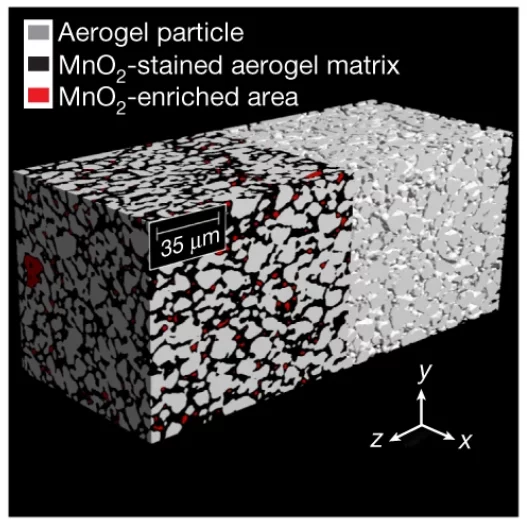Silica aerogels are excellent thermal insulators but are too brittle to obtain complex geometries and spatial functionalities by subtractive manufacturing. Researchers from Empa and ETH Zürich have now succeeded in printing very precise structures thanks to a new 3D direct ink writing process using a slurry of silica aerogel powder in a dilute silica nanoparticle suspension. The printed structures can be of the size of a tenth of a millimeter. The rheology of the ink can be adapted, making it flexible for different kinds of usage. They have a thermal conductivity < 16 mW/(m*K), making them very good thermal insulators, as demonstrated in the publication. These results were published in Nature on August 18, 2020.
This new 3D printing process opens the door to new applications in microelectronics and precision engineering. The printed structures can be used as thermal shielding or as functional materials, for example, as printed aerogel membrane. Different aerogels compositions are under investigation thanks to X-ray phase contrast imaging at the TOMCAT beamline.
Original Publication
Additive manufacturing of silica aerogels, S Zhao, G Siqueira, S Drdova, D Norris, C Ubert, A Bonnin, S Galmarini, M Ganobjak, Z Pan, S Brunner, G Nyström, J Wang, MM Koebel, WJ Malfait, Nature 584, 387–392(2020).
Contact
Dr. Anne Bonnin
Beamline Scientist, Swiss Light Source
Paul Scherrer Institut
Telephone: +41 56 310 4678
E-mail: anne.bonnin@psi.ch

